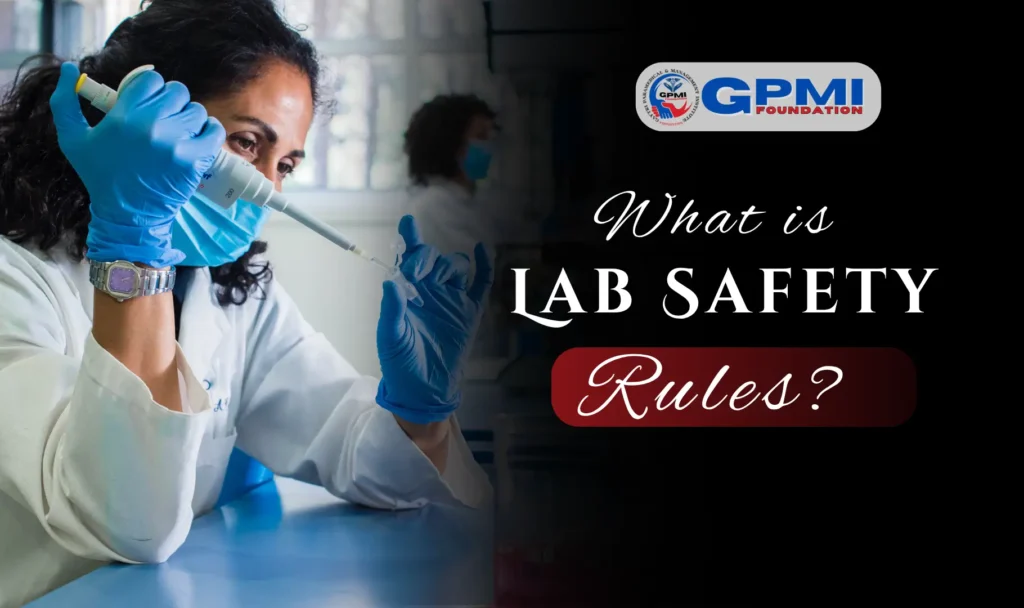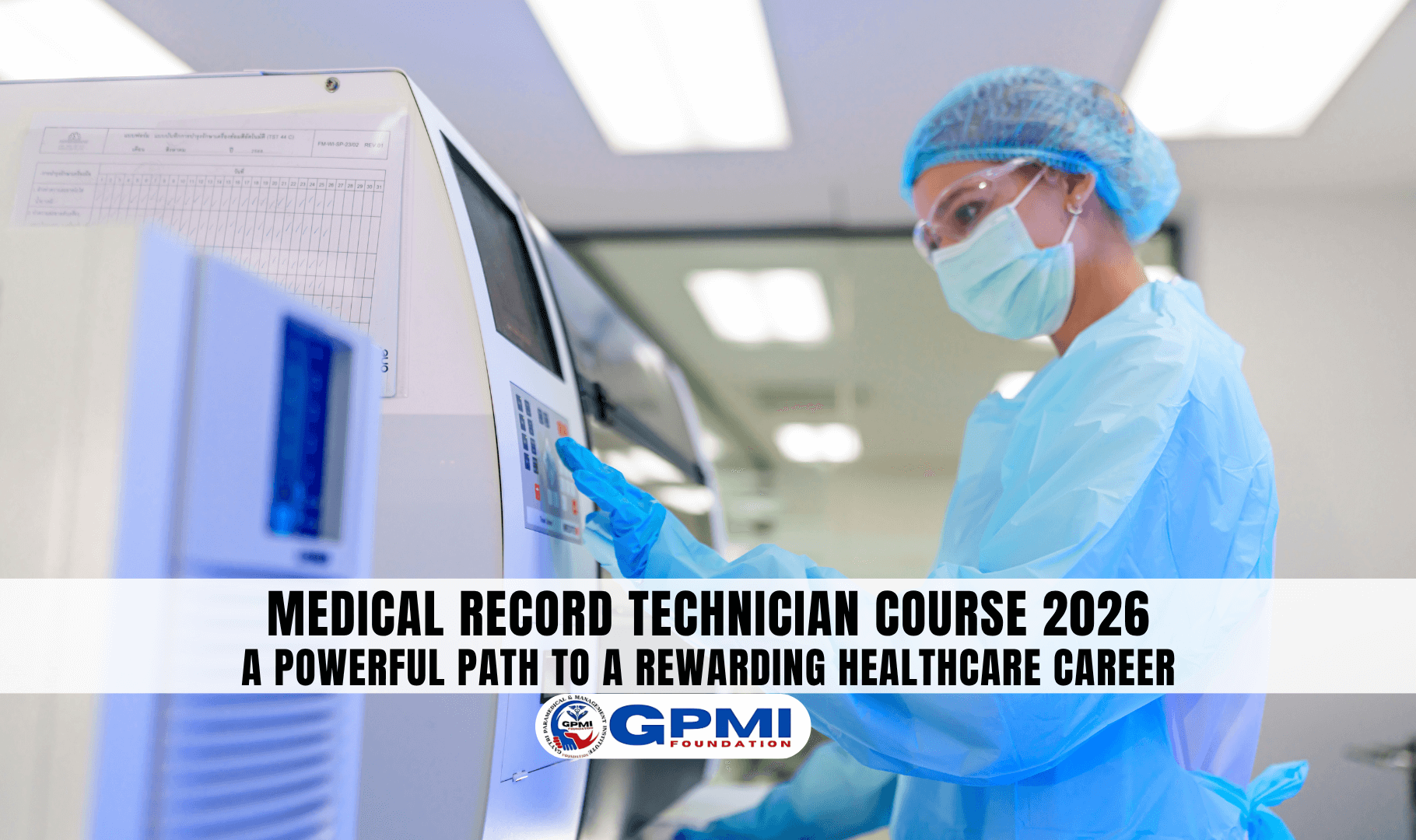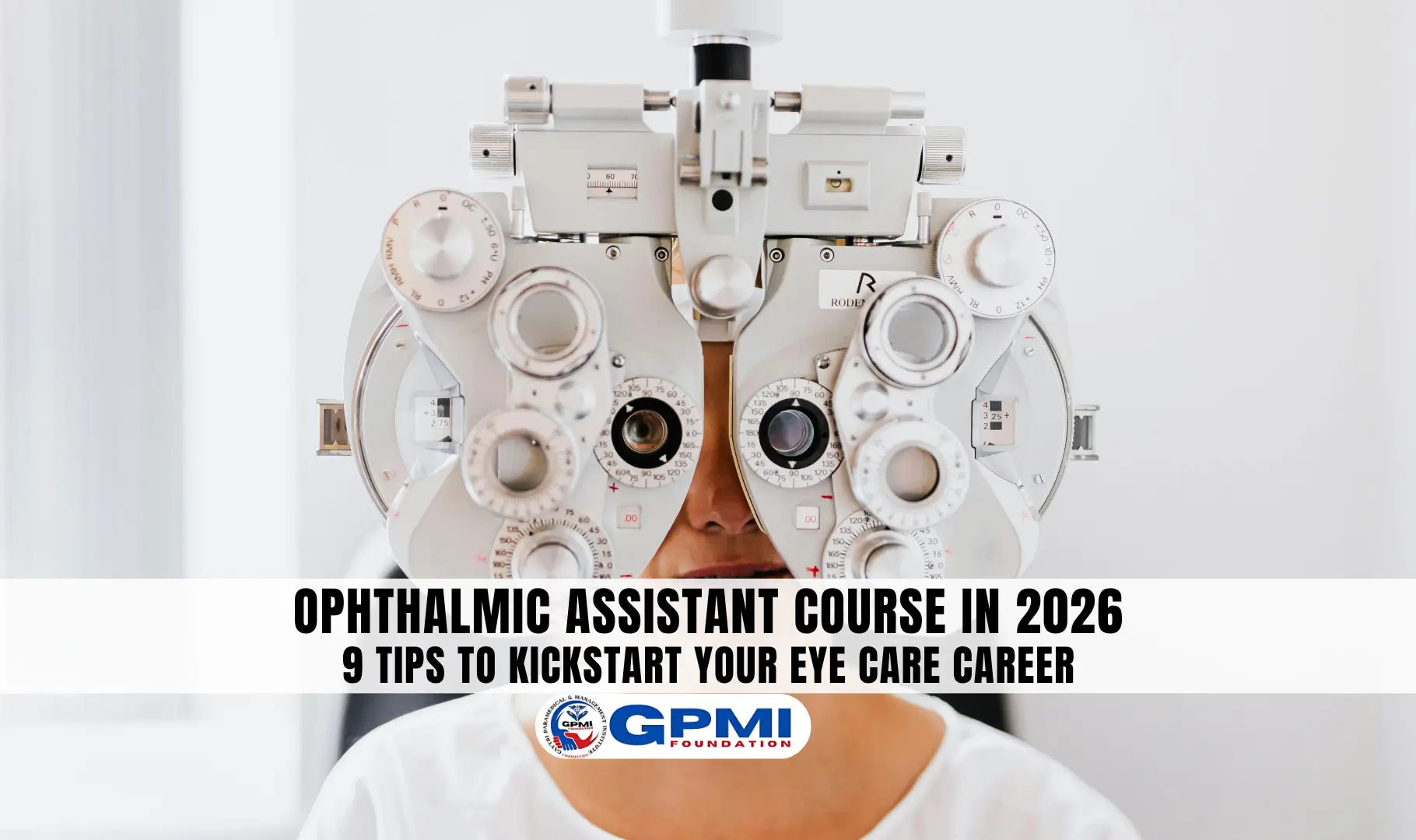Laboratories are exciting environments where important experiments, chemical reactions, and medical tests are conducted every day. However, they can quickly become hazardous if lab safety rules are not strictly followed.
From handling dangerous chemicals to working with sharp instruments and infectious samples, labs pose several risks that can lead to serious injuries or even life-threatening situations.
That’s why it’s essential for everyone working in a lab—whether you’re a student, intern, or professional lab technician—to understand and follow proper safety practices at all times.
Being careless, skipping safety steps, or ignoring protocols not only puts you in danger but can also harm your colleagues and affect the accuracy of the results. Lab safety is not just a rulebook—it’s a mindset and a habit that every technician must adopt.
In this article, we will explore 11 crucial lab safety rules that must be followed by lab technician to ensure a safe, clean, and efficient laboratory environment for everyone.
Table of Contents
What is Lab Safety Rules?

Lab safety rules are a set of guidelines that help keep everyone safe while working in a laboratory. These rules are made to prevent accidents, injuries, and harmful exposure to chemicals or infections. In a lab, you may work with sharp tools, hot equipment, flammable liquids, or biological samples. Without proper safety steps, small mistakes can turn into big problems.
Lab safety rules tell you how to dress, what equipment to use, how to handle samples, and what to do in case of an emergency. For example, wearing gloves, goggles, and a lab coat is part of basic safety. So is keeping your work area clean and reporting any spills or injuries.
Whether you’re a student, intern, or lab technician, following these rules is not a choice—it’s a responsibility. Lab safety protects you, your team, and even the environment. Always remember: a safe lab is a successful lab.
Why Are Lab Safety Rules So Important?
Lab safety rules are extremely important, especially for medical lab technicians who work with biological samples, sharp tools, chemicals, and machines daily. These rules are not just formalities—they are lifesaving practices designed to protect people, equipment, and the environment.
In a medical laboratory, technicians handle blood, urine, and tissue samples that may carry dangerous bacteria or viruses. A simple mistake, such as forgetting to wear gloves or mishandling a sample, can lead to infection, contamination, or even disease transmission. Lab safety rules such as wearing protective gear, washing hands, and using proper disposal methods reduce these risks significantly.
Accidents like chemical spills, needle pricks, or electric shocks can happen anytime. Without proper safety procedures, such incidents can cause serious injuries. Safety rules ensure that technicians are prepared to respond quickly and correctly to emergencies.
Moreover, following safety rules improves the accuracy and reliability of test results. A clean, organized, and safe lab ensures that samples are not mixed up or contaminated, which is vital for patient care.
In short, lab safety rules protect lives, ensure quality results, and build a professional and responsible work culture. For medical lab technicians, these rules are not optional—they are a daily duty and a foundation of safe laboratory practice.
11 Must Follow Lab Safety Rules

Now that you understand the importance of lab safety, let’s explore the 11 must-follow lab safety rules that every lab technician should know to maintain a safe and accident-free environment.
1. Always Wear Proper Lab Gear
One of the most important lab safety rules is to wear appropriate personal protective equipment (PPE) at all times in the lab before starting any experiment or procedure. Lab gear protects you from harmful chemicals, sharp objects, and infectious materials. Without it, you are at high risk of injury or contamination.
Here are some key items of proper lab gear:
- Lab Coat: Protects your clothes and skin from spills and splashes
- Gloves: Prevents direct contact with chemicals, samples, and sharp tools
- Safety Goggles or Face Shield: Protects your eyes from splashes, dust, or fumes
- Closed-Toe Shoes: Keeps your feet safe from falling objects or spilled liquids
Wearing lab gear should be a daily habit, not an option. Make sure everything fits well and is in good condition. Never enter into the lab without full protective gear.
2. Know the Emergency Equipment and Exits
For a medical lab technician, knowing where emergency equipment is located and how to use it is a critical part of following lab safety rules.
Labs deal with blood samples, chemicals, glassware, and electrical equipment—all of which can lead to accidents if something goes wrong. Being prepared can save your life and the lives of others.
Here’s what every medical lab technician should be familiar with:
- Fire extinguisher: Know the type and how to use it
- Eye wash station: For rinsing eyes if chemicals splash
- Safety shower: In case of large chemical spills on the body
- First aid box: For minor cuts, burns, or needle pricks
- Fire blanket: Useful for small fires or to wrap around a person
- Emergency exits: Always know the quickest route out
Regular drills and safety training help reinforce these lab safety rules. Never ignore safety signs or block exits—being alert and prepared is part of your job.
3. Keep Your Work Area Clean and Organized
As a medical lab technician, keeping your workspace clean and organized is not just about tidiness—it’s about safety and accuracy. One of the key lab safety rules is to always maintain a clutter-free, sanitized, and well-arranged workstation.
A messy lab bench can lead to spills, cross-contamination, equipment damage, and even sample mix-ups, which can seriously affect patient test results.
Here are some important practices to follow:
- Wipe down surfaces before and after every procedure
- Label all samples and reagents clearly and correctly
- Dispose of used gloves, sharps, and biological waste in proper bins
- Keep tools and glassware in their designated places
- Avoid eating, drinking, or storing food in the lab area
A clean, organized workspace shows professionalism and reduces the risk of errors in handling sensitive medical samples.
4. Handle Biological Samples with Extreme Care
One of the most essential lab safety rules for any medical lab technician is to handle biological samples with extreme care. Blood, urine, sputum, stool, and tissue samples may contain harmful viruses, bacteria, or other pathogens that can spread infections. As a technician, you must assume that every sample is potentially infectious, whether it looks clean or not.
Here are some key safety practices to follow:
- Always wear gloves when collecting or handling samples
- Use leak-proof, labeled containers for storage and transport
- Avoid direct contact with samples—never touch them with bare hands
- Do not pipette by mouth—always use mechanical pipetting devices
- Dispose of biohazard waste in red or yellow biohazard bags/containers
- Sanitize your workspace before and after handling specimens
Following this lab safety rule helps protect you, your co-workers, and patients from contamination and accidental exposure. Safety in sample handling ensures accurate diagnosis and a healthier working environment.
5. Use Equipment Correctly and Safely
As a medical lab technician, your daily tasks involve using various lab instruments like centrifuges, microscopes, pipettes, blood analyzers, and sterilizers. One of the most important lab safety rules is to use all equipment correctly and safely to avoid accidents, errors, or damage.
Before using any equipment, you should:
- Read the user manual or get proper training
- Inspect equipment for damage or defects
- Calibrate machines as per protocol
- Never force or tamper with lab tools
- Turn off equipment after use and clean properly
- Report faulty equipment to your supervisor immediately
Improper use of lab equipment can result in incorrect test results, personal injury, or exposure to biohazards. For example, overfilling a centrifuge can cause it to break or spill dangerous materials. Always work with focus and caution when operating lab devices.
6. Never Eat, Drink, or Apply Cosmetics in the Lab
One of the most often overlooked but critical lab safety rules is to never eat, drink, or apply cosmetics inside the laboratory. For medical lab technicians, this rule is especially important because they work with potentially infectious biological samples like blood, urine, and tissue.
Consuming food or drinks in such an environment increases the risk of accidental ingestion of harmful substances or microorganisms.
Here are some reasons and precautions:
- Food or drinks can absorb chemical fumes or biological particles, making them unsafe
- Touching your face or lips after handling samples can transfer pathogens
- Lipstick, lotion, or face cream can contaminate your hands or samples
- Keep all personal items, including water bottles and snacks, outside the lab area
Always wash your hands before taking breaks and use designated areas for meals or personal grooming.
7. Dispose of Waste Properly
Proper waste disposal is one of the most important lab safety rules that every medical lab technician must follow. Labs generate different types of waste, such as used gloves, blood samples, broken glass, needles, chemical containers, and biological materials.
If not handled and disposed of correctly, these wastes can cause infections, injuries, or environmental pollution. Here are some important practices for safe disposal:
- Use color-coded bins for different waste types—red for biohazards, yellow for infectious waste, blue for glass, and black for general waste
- Never throw sharps like needles or broken glass in regular trash; use a puncture-proof sharps container
- Seal and label waste bags properly before disposal
- Follow hospital or lab protocols for chemical and biological waste disposal
- Never mix chemical waste with biological waste
Following this lab safety rule not only keeps the lab clean and safe but also prevents the spread of disease and maintains environmental health. It’s a basic but powerful responsibility for every lab technician.
8. Report All Accidents or Incidents Immediately
One of the most essential yet often neglected lab safety rules is to report all accidents or incidents immediately, no matter how minor they may seem. As a medical lab technician, you work with biological samples, sharp instruments, and chemical substances.
Even a small needle prick, chemical splash, or glass cut can lead to serious health risks if not reported and treated promptly. Here’s what to do and why it matters:
- Inform your supervisor or lab in-charge right after the incident
- Follow the lab’s accident reporting protocol, including filling out incident forms
- Seek first aid or medical attention if needed
- Document what happened to help prevent future accidents
- Do not try to hide or ignore mistakes, even if they seem small
Following this lab safety rule ensures quick response, protects others from similar hazards, and keeps your lab in compliance with health and safety regulations. Early reporting can stop a small issue from becoming a serious problem.
READ MORE: EMT Course: 6 Reasons Why It’s the Best Career Choice
9. Wash Hands Before and After Lab Work
One of the simplest yet most powerful lab safety rules for medical lab technicians is to wash hands thoroughly before and after any lab work. In a medical lab, technicians handle blood, urine, body fluids, and potentially infectious materials.
These can carry harmful bacteria, viruses, or chemicals that may not be visible to the naked eye. Washing hands is a basic infection control step that protects both the technician and the patients. Here are some key points:
- Wash hands with soap and water for at least 20 seconds
- Use hand sanitizer when soap and water are not available, but only when hands are not visibly dirty
- Wash hands before wearing gloves to avoid trapping germs
- Always wash hands after removing gloves, disposing of samples, or touching lab equipment
Following this lab safety rule reduces the risk of cross-contamination, maintains hygiene in the lab, and prevents the spread of infection within the workplace. It’s a small habit that makes a big difference in laboratory safety.
10. Do Not Work Alone During Risky Procedures
One of the most important lab safety rules for medical lab technicians is to never work alone during risky procedures. Medical laboratories often involve handling infectious samples, operating heavy or electrical equipment, dealing with pressurized systems, or working with hazardous chemicals. Performing these tasks alone increases the chances of delayed help in case something goes wrong.
Here’s why you should never work alone during such tasks:
- Accidents can happen suddenly, such as chemical spills, electric shocks, or needle pricks
- Having a colleague nearby ensures immediate assistance in emergencies
- A second person can help follow protocols correctly and reduce human error
- Companions can act quickly to shut down equipment or alert emergency services if needed
Following this lab safety rule is not only for your own safety but also ensures that any error or emergency is managed immediately. Always inform your supervisor when performing risky procedures and make sure at least one trained person is nearby.
11. Keep Learning and Stay Updated on Safety Guidelines
Final most important ongoing lab safety rules for medical lab technicians is to keep learning and stay updated on the latest safety guidelines. The medical field is constantly evolving, and so are the standards for lab safety. New equipment, updated protocols, and emerging health risks require technicians to stay informed and prepared.
Here’s why continued learning is essential:
- New safety technologies and equipment require updated handling procedures
- Guidelines for handling infectious diseases, like COVID-19, change with time
- Refresher courses and workshops help reinforce proper practices
- Learning from past incidents improves overall lab culture and safety
- Staying updated with NABL or hospital protocols ensures compliance and quality
Following this lab safety rule keeps you confident, reduces the chances of errors, and shows your dedication to your profession. Read safety manuals, attend regular training, and actively participate in lab meetings. In a medical lab, knowledge is not just power—it’s protection.
READ MORE: DMLT Course:- Diploma in Medical Lab Technology
Conclusion
Lab safety is not just a set of instructions—it is a vital part of every medical lab technician’s daily routine. From wearing proper lab gear to knowing emergency exits, each rule plays a critical role in preventing accidents, protecting health, and maintaining the quality of lab results.
Whether it’s handling biological samples with care, disposing of waste properly, or never working alone during risky procedures, these safety practices are designed to reduce risks and create a secure working environment.
Following lab safety rules ensures that technicians can perform their duties confidently and responsibly without putting themselves or others in danger. It also supports accurate testing, protects the integrity of medical samples, and helps maintain trust in healthcare services.
In the ever-evolving field of medical science, staying updated and committed to lab safety is not just good practice—it’s a professional responsibility. A safe lab is a smart lab, and every technician plays a key role in keeping it that way.







